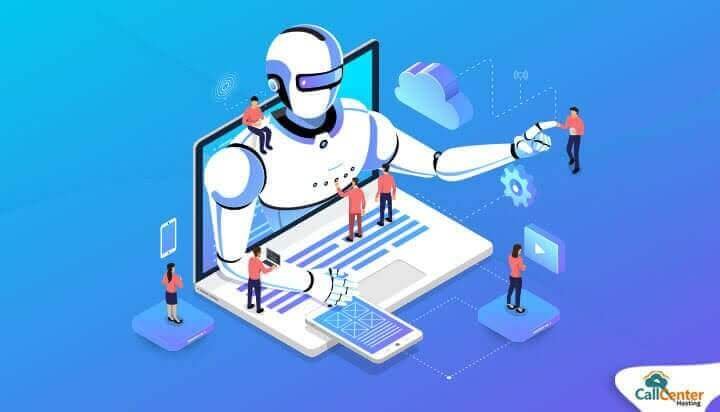Artificial Intelligence (AI) can be defined as the simulation of human intelligence in machines programmed to think, learn, and make decisions.
Thank you for reading this post, don't forget to subscribe!This technology encompasses a broad spectrum of applications and capabilities, ranging from simple algorithms to complex neural networks. Appreciating AI’s historical development is crucial to understanding its current impact and future directions effectively.
The concept of AI was first introduced in the mid-20th century, with significant milestones marking its evolution. Early endeavors in the 1950s and 1960s revolved around basic problem-solving and symbolic reasoning. Pioneers of AI, such as Alan Turing, laid the groundwork for future advancements by proposing that machines could perform tasks akin to human cognitive functions. However, progress faced hurdles due to limitations in computational power and understanding of machine learning at the time.
Read More: GWC Tech Hub Limited Secures Product Marketing Partnership with Tesla
As technology advanced, particularly in the late 20th and early 21st centuries, AI began to revolutionize various sectors. The emergence of machine learning and deep learning subsets of AI that rely on large datasets and sophisticated algorithms has facilitated a leap in AI capabilities. These innovations allow systems to learn from data patterns, improving their performance without explicit programming. Automation, a formidable aspect of AI, involves executing tasks with minimal human intervention, thus streamlining processes across industries.
In recent years, the integration of AI has garnered significant momentum. Sectors such as healthcare, finance, manufacturing, and transportation have increasingly adopted AI technologies to enhance efficiency and accuracy. For example, healthcare providers leverage AI for diagnostics and personalized treatment plans, while manufacturers utilize it for predictive maintenance and supply chain optimization. This widespread integration highlights not only the versatility of AI but also the need for ongoing dialogue about its implications for employment in the workforce.
Potential Job Displacement Due to Automation
As artificial intelligence (AI) continues to advance, its implementation across various industries has raised concerns regarding potential job displacement driven by automation. While the integration of AI technologies can enhance productivity and efficiency, it also threatens to eliminate certain roles, particularly in sectors where routine and repetitive tasks are commonplace. Manufacturing, retail, and administrative positions are among the most vulnerable to these changes.
Statistical data highlights the scale of the issue. According to a study by the McKinsey Global Institute, it is estimated that by 2030, up to 375 million workers globally may need to transition to different occupations due to automation. The report notes that roles most susceptible to automation are characterized by predictable tasks that can be efficiently performed by machines. In manufacturing, for example, jobs involving assembly lines and quality control are increasingly being executed by robots, which can operate with greater speed and precision.
Recommended: Top Rated Software Agency In Abuja
Similarly, the retail industry faces disruption as AI-powered technologies, such as self-checkout systems and inventory management software, render traditional cashier and stock clerk positions obsolete. A report from the National Retail Federation suggests that automation could lead to the elimination of over 2 million retail jobs within the next decade. Furthermore, administrative roles that require data entry, scheduling, and basic customer service are at risk as AI solutions such as chatbots and virtual assistants become more sophisticated.
Expert opinions underscore the urgency of addressing this phenomenon. Many believe that proactive measures, including re-skilling and up-skilling programs, must be implemented to equip affected workers with the necessary skills to thrive in an evolving job landscape. As we observe the rapid integration of AI into our daily operations, it is crucial to recognize and address its implications on employment rates across various industries.
New Job Creation and Evolution of the Workforce
The advent of artificial intelligence (AI) has spurred significant changes within various sectors, posing both challenges and opportunities for the workforce. While concerns about job displacement due to automation are prevalent, it is essential to recognize that AI also drives the creation of new roles and transformations in existing jobs. Industries such as technology, healthcare, and AI maintenance are anticipated to witness substantial growth fueled by AI advancements.
In the technology sector, the demand for skilled professionals is increasing as organizations look to integrate AI solutions into their operations. Roles such as AI specialists, data scientists, and machine learning engineers are becoming essential to leverage AI for developing innovative products and services. Similarly, the healthcare industry is evolving significantly as AI tools are implemented to enhance diagnostics, optimize patient care, and streamline administrative processes. This evolution creates a need for healthcare professionals who are adept at using AI technology, thereby establishing new job roles focused on AI integration and management.
Learn Now: GWC Tech Hub LLC Announces Abuja Headquarters: A Strategic Move for 2025
Moreover, the maintenance and management of AI systems present opportunities for job creation. As organizations adopt AI solutions, the demand for technicians and support staff trained in AI operations will increase. This trend signifies a shift in workforce dynamics where current employees will need to adapt and evolve their skill sets. The emphasis on reskilling and upskilling prepares existing workers for the challenges posed by AI, allowing them to transition into higher-skilled roles that complement AI functionalities.
The potential for job advancement in a transforming job market is evident as companies seek individuals who can provide value in an AI-augmented workplace. Adaptability will be crucial as the workforce navigates this changing landscape. Thus, while AI presents challenges, it equally opens pathways for innovation and workforce evolution, driving economic growth and job creation in emerging fields.
Preparing for an AI-Driven Future
The advent of artificial intelligence (AI) presents both significant challenges and opportunities for the workforce. As the deployment of AI technologies accelerates, individuals, businesses, and policymakers must proactively prepare for the changes that accompany an AI-driven employment landscape. One of the foundational strategies is the emphasis on education. As AI continues to evolve, it is crucial for educational institutions to adapt curriculums to include essential skills such as data analysis, programming, and critical thinking. This focus on skill development will equip individuals to thrive in a workplace increasingly influenced by technology.
Moreover, ongoing training will play a vital role in ensuring that current workers are not left behind. Companies that invest in continuous learning initiatives will foster a culture of adaptability and resilience amongst their employees. Training programs should focus on upgrading existing skills and teaching new competencies that complement AI technologies. This approach not only enhances employee satisfaction but also boosts organizational productivity, ultimately benefiting the economy as a whole.
In addition to these educational strategies, the establishment of comprehensive social safety nets is essential. Policymakers must consider creating policies that address the potential displacement of workers due to automation. This might include unemployment benefits, retraining programs, and support for industries that are more likely to be affected by AI advancements. Furthermore, ethical implications surrounding AI use must be examined. Regulations that ensure ethical AI practices are crucial to minimize biases and protect workers’ rights during this transition. By proactively addressing these aspects, stakeholders can facilitate a smoother integration of AI into the workforce, ensuring that the changes bring about equitable opportunities for all.



Pingback: Maximizing Workflow with AI in the 21st Century
Pingback: 5 Quality Benefits of Having a Business Website as a Start-Up in 2025
Pingback: AI Isn’t Taking Your Job—But It’s Changing It: What You Need to Know in 2025